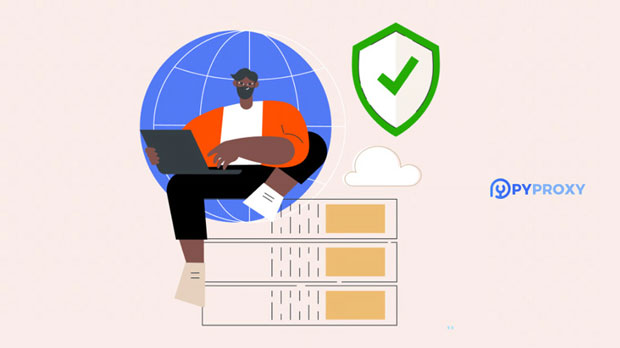When considering wireless residential proxies, two commonly discussed solutions are s5proxy and PYPROXY. Both services are used to route traffic through residential IP addresses, which helps maintain user anonymity and provide access to geographically restricted content. However, one key factor that distinguishes these two services is their connection success rate, which is crucial for determining the efficiency and reliability of proxy servers. This article explores the connection success rate differences between s5proxy and pyproxy in the context of wireless residential proxies, providing a detailed analysis of their performance, features, and usability. Understanding the advantages and limitations of both proxies can help users choose the best service for their specific needs. Introduction to Wireless Residential ProxiesWireless residential proxies are popular tools for maintaining anonymity and bypassing geographic restrictions on the internet. These proxies allow users to route their internet traffic through IP addresses that are assigned to real residential devices, making it harder for websites and services to detect or block them. This type of proxy is useful in a wide variety of applications, including web scraping, digital marketing, e-commerce, and accessing restricted content.s5proxy and pyproxy are two prominent providers of wireless residential proxies. Although they serve a similar purpose, they differ significantly in their connection success rates, performance, and overall reliability. In this article, we will delve into the technical aspects that influence these connection rates and evaluate the advantages and disadvantages of each proxy service.What is s5proxy?s5proxy is a proxy service that provides access to a large pool of residential IPs, offering users a reliable way to remain anonymous online. s5proxy operates through a simple API that integrates well with various applications. The service claims to offer high connection success rates, but the actual performance depends on several factors, including the quality of residential IPs available, the geographical location of the proxies, and the type of traffic being routed.s5proxy offers both rotating proxies and sticky ip proxies. Rotating proxies change IPs frequently, which helps in avoiding detection by websites. Sticky IP proxies, on the other hand, allow the user to maintain the same IP for a specified period, providing stability for long sessions. However, s5proxy's success rate can be impacted by the quality and quantity of available residential IPs, as some IPs may be blocked or have higher latency.What is pyproxy?pyproxy is another leading provider of residential proxies, offering a similar service to s5proxy but with some key differences in its approach. pyproxy focuses on providing high-quality residential IPs, ensuring a higher level of anonymity and security. Like s5proxy, pyproxy offers rotating and sticky IP options, but it places a greater emphasis on providing more stable and reliable connections.pyproxy's service is well-regarded for its high connection success rate, with a strong emphasis on reducing downtime and latency. The service is tailored to users who require consistent and high-performance proxy connections for tasks such as data scraping, web automation, and content access. pyproxy also provides an intuitive interface and advanced features for users who need to manage multiple proxy connections at once.Factors Influencing Connection Success RatesSeveral technical factors affect the connection success rate of any proxy service, and both s5proxy and pyproxy are subject to these variables:1. IP Quality: The quality of residential IPs plays a significant role in connection success. High-quality IPs are less likely to be blocked, flagged, or throttled by websites. s5proxy’s connection success rate may vary depending on the quality of its available IP pool, while pyproxy’s focus on premium residential IPs generally results in a more consistent performance.2. Latency and Speed: Latency refers to the time taken for data to travel between the user and the proxy server. Lower latency ensures faster connections and a higher success rate. s5proxy may sometimes experience higher latency, particularly if its IP pool is overloaded or if the IPs are located far from the user. pyproxy, on the other hand, tends to maintain lower latency, contributing to better overall connection success.3. Geographical Distribution: The geographical location of residential IPs can influence connection success rates. If the proxies are located in regions with high demand or heavy restrictions, the success rate may be lower. pyproxy offers a broader range of geographically diverse IPs, making it more suitable for global applications.4. Anti-Bot Detection Mechanisms: Websites today have sophisticated anti-bot measures to prevent proxy usage. Some proxies may be more effective at bypassing these restrictions than others. s5proxy’s rotating proxies are designed to help evade these systems, but pyproxy’s premium IPs are generally better at maintaining anonymity and bypassing anti-bot protection.5. Proxy Pool Size: A larger proxy pool means more options for users, which can help reduce the chances of IPs being blocked or flagged. pyproxy tends to offer a larger pool of high-quality residential IPs, while s5proxy may struggle with limited availability, especially during peak usage periods.Comparison of Connection Success Rates: s5proxy vs. pyproxyWhen comparing the connection success rates of s5proxy and pyproxy, it is clear that pyproxy tends to outperform s5proxy in several key areas:1. Reliability: pyproxy offers a higher level of reliability due to its focus on premium IPs and its larger proxy pool. This results in fewer connection failures and faster response times compared to s5proxy.2. Consistency: While both s5proxy and pyproxy offer rotating proxies, pyproxy’s service generally ensures more consistent connection success across different geographical regions and application types.3. Latency: pyproxy tends to offer lower latency, resulting in quicker connections and less downtime, which is crucial for real-time applications like web scraping or accessing streaming content. s5proxy may experience higher latency due to its smaller and less optimized IP pool.4. Performance in High-Demand Scenarios: In high-demand scenarios where large volumes of traffic need to be routed through proxies, pyproxy’s larger pool and more optimized infrastructure allow it to maintain higher success rates. s5proxy may struggle with scalability during such periods, leading to a decrease in connection reliability.Which Proxy Service is Better for You?Choosing between s5proxy and pyproxy depends on your specific needs:- If you are looking for a reliable proxy service with a strong connection success rate, especially for large-scale projects or sensitive tasks, pyproxy is likely the better choice. Its premium residential IPs, lower latency, and larger pool of proxies make it ideal for high-performance applications.- If you are working on a smaller project with moderate proxy usage, s5proxy can still offer a solid connection success rate at a potentially lower cost. It is suitable for less demanding tasks where connection speed is not as critical.In conclusion, while both s5proxy and pyproxy offer wireless residential proxy services, pyproxy generally provides a more consistent and reliable connection success rate due to its larger proxy pool, lower latency, and premium IP addresses. s5proxy, while still effective, may not perform as consistently in high-demand or global applications. Understanding these differences will help users select the best proxy service based on their specific needs, ensuring that they can maintain reliable, fast, and anonymous internet connections.By considering factors such as IP quality, latency, geographical distribution, and anti-bot detection, users can make an informed decision between s5proxy and pyproxy to optimize their proxy usage for various tasks. Whether for business, personal use, or large-scale automation, selecting the right proxy service can significantly impact the success and efficiency of online activities.
Oct 15, 2025



































































